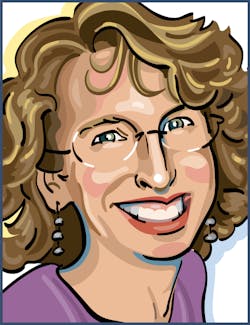Innovations helping optical coherence tomography (OCT) fulfill its potential in biomedicine. To me, there are few things more exciting than seeing lab-perfected technologies released to improve the health of individuals. That is the focus of a free session taking place in the BiOS Expo hall (https://spie.org/PW/special-events/Industry-Event#aoct) on opening day at the Biomedical Optics Symposium (BiOS) of Photonics West 2020. Starting at 10:30 am, a handful of speakers representing a range of exciting developments will appear on the Industry Stage in Hall DE to report on leading developments in technologies, system design, and applications, and provide insight into a broad range of markets.
BioOptics World is pleased for the opportunity to facilitate this session, which will begin with Tilman Schmoll of Carl Zeiss Meditec, the company dominating OCT’s largest application area, ophthalmology. Dr. Schmoll will provide an overview of state-of-the-art ophthalmic OCT and describe how Zeiss is using OCT to further transform patient care in this field by boosting speed, depth, and quality of OCT imagery—for instance, with impressive field-of-view (FOV) expansion and with noninvasive capillary contrast. Further, he will report on directions for future OCT systems. Next to the podium will be Ryan Shelton, co-founder and CEO of PhotoniCare—a company launched to commercialize exciting work done in the lab of Stephen Boppart at the University of Illinois at Urbana-Champaign—will describe a re-engineering of OCT technology with a specific purpose: production of a handheld tool that for the first time is enabling objective, quantitative, and noninvasive assessment of middle ear infections, the leading cause of hearing loss, surgeries, and antibiotic use in children. Dr. Shelton will discuss device design and operation, as well as potential for further development of this innovation now displacing the current gold standard technology that is only 50% accurate.
Another application-focused presentation, this one from Barry Vuong, Senior Scientist/Engineer at SpectraWAVE, leverages work done in Guillermo Tearney’s lab at Harvard Medical School and Massachusetts General Hospital to improve outcomes for cardiology patients. As Dr. Vuong will explain, SpectraWAVE is using telecom-inspired fiber-optic components and systems to add near-IR spectroscopy (NIRS) to intravascular OCT (IVOCT) in a single compact and affordable new instrument. This combined technology provides simultaneous information about the microstructure and composition of coronary plaques, greatly improving stenting procedures as well as detection of vulnerable plaques.
Expanding access for broad impact
The last two presentations will report on developments affecting progress of OCT across a broad range of applications. First, renowned Duke University professor Adam Wax, who also happens to be founder and Chief Science Officer of Lumedica (a company launched to break down barriers to OCT access), will next discuss work—including engineering, development, and distribution—to make the technique affordable for researchers and educators, clinicians, and OEMs. His presentation will review operation, applications, commercial outcomes, and potential future directions of low-cost OCT.
Then, Shahid Islam, Lead VCSEL Applications Scientist at Thorlabs, will summarize recent work at Thorlabs to develop advanced components and subsystems for next-generation OCT. Specifically, he will cover MEMS-VCSEL light source technology for sweep-mode switchable kHz-to-MHz A-scan rate OCT and meter-depth range imaging. Dr. Islam will also discuss miniaturization and cost reduction of OCT components and systems, and new OCT research applications, and how these advances enable OCT researchers and developers, OEMs, and end users without detailed knowledge of OCT.
This session will provide insight on outstanding work emerging into the market where it is able to make important differences in people’s lives. The presentations will, in a way, celebrate the start of OCT’s third decade in medicine. I hope you will join us in this celebration!

